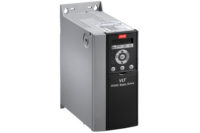Galyen told The NEWS that Danfoss will be shifting its mix of products that are built for the fixed-speed and variable-speed markets in response to expected market demands.
“The use of variable speed in the global market is well ingrained in other places in the world. In Japan, nearly 100 percent of residential air conditioning uses variable-speed technology; China is more than 50 percent, and in the U.S. market it is less than 1 percent. We see the market trend going toward variable speed, and to support that we are going to position our Arkadelphia, Ark., factory to meet the market demand.
“Danfoss is in a unique position because we make both compressors and variable-frequency drives, so we are really leveraging the two technologies together. To support the U.S. market, the compressors will be built in the Arkadelphia, Ark. factory and the custom drive will come from our factory in Denmark,” said Galyen.
Global Utility Trends
Galyen noted that in Japan and China two things have aided the growth of variable-speed technology: energy costs have historically been much higher, and the minimum equivalent equipment energy-efficient levels have been much higher than in the United States. He believes both of these will change. “We believe that will be the case here as well, as the cost of energy increases, and as our minimum efficiency levels get a higher mandate,” said Galyen.
Energy consumption continues to grow in the United States. “I have seen data that shows we have controlled the base load pretty well, but to serve the growing need there are going to be some natural impediments to building new power plants, not only the fact that people say, ‘I don’t want it in my backyard’ but also, ‘I don’t want the cost associated with it,’ and, ‘I don’t want the environmental impact due to the carbon emissions,’ ” said Galyen.
Depending upon the area, utilities are forced into some difficult situations such as rolling brownouts and even rolling blackouts. Demand response activities at utilities are becoming common, such as controlling and turning the thermostat up a few degrees in the afternoon (summer operation) or shutting the system down at peak load times between 2-5 p.m.
Galyen said, “With variable speed, the benefit to a utility is to be able to send a signal that limits the operation rather than completely shutting down or cycling a system — both of which are less efficient.”
The communication controls that are on the front end of variable-speed systems provide a higher degree of certainty for utility companies. Once the connection is there, it becomes very easy for the utility to address demand response needs. Utilities are really trying to handle the issue through demand response.
Capacity limits on peak load is a most critical change coming, especially through utility companies. “I think utility rates will be escalating especially at or near peak operation times, and TOU rates will become very common. Consumers will start to understand that electricity isn’t 10 cents per kW, it will be more like $1.75.”
Variable-Speed Benefits
“We have been able to enhance reliability by building the protection into the drive so we can monitor the compressor, such as being able to protect it from irregular startup current, or measuring the discharge temperature in order to de-rate or even shut down if need be. There is a lot of intelligence built in to this equipment to ensure optimal performance and comfort, including very high temperature control and the capability to control humidity, too. Also, we have found an immediate improvement of 35 percent in efficiency, and a noise reduction of 10 db in 30 to 90 hz applications. These are some of the end user benefits,” said Galyen.
However, there are also benefits to utility companies. During peak demand conditions, efficiency is not the big concern — it’s really the load.
Galyen said, “Danfoss has invested heavily in the future of variable speed. We were the first to market for commercial air conditioning applications, and we will be introducing the next version for commercial applications at the AHR Expo.”
Publication date: 01/23/2012



